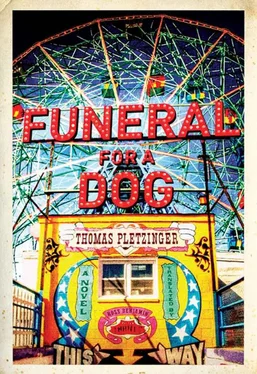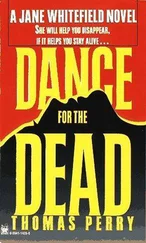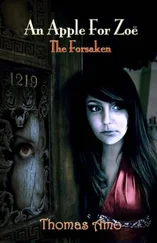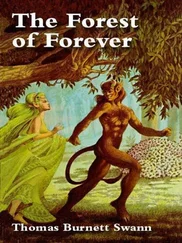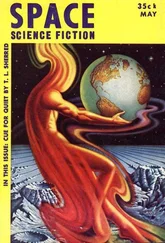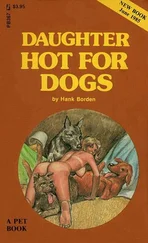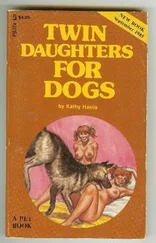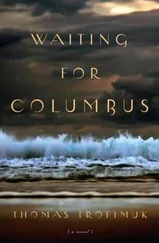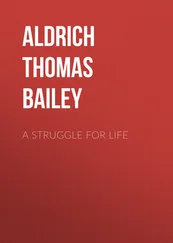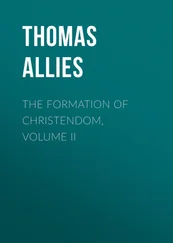So why a children’s book?
As I follow Svensson and the boy on his shoulders into the large room on the ground floor, into the smell of sage and mint, of garlic and onions, of tomato sauce with red wine and capers, I notice my hunger and my thirst. Kiki is standing in the entrance to the kitchen, she’s wearing an apron, holding the crying Bella. When I ask if I can help, Kiki hands me the girl (don’t worry, says Kiki, she’s tired anyway). She disappears into the kitchen and comes back with two glasses of wine, one for Svensson, one for me. So there will be drinking again today. Svensson kisses his daughter on the nose (in doing so, he comes closer to me than ever before). Bella reaches for my ear, then she leans her head on my shoulder, she has her mother’s hair (children are heavier than I thought). Start! shouts Samy, start! We raise our glasses. The Story of Leo and the Notmuch , Svensson starts with the boy on his shoulders, begins like this.
The Story of Leo and the Notmuch
SVENSSON: Our Leo is a cheeky little boy, just like you, / and best of all:…
SAMY:…his friend Fips is with him too.
SVENSSON: Fips and Leo are the best / friends in the whole town, / Fips and Leo are so funny…
SAMY:…
SVENSSON:…that…
SAMY:…there are always laughs when they’re around.
SVENSSON: Exactly. This here is Leo and this here is Fips, with the yellow hair, you see? The two of them are the best of friends.
SAMY: Yeah. Keep going.
SVENSSON: Okay. What comes next?
SAMY: Fips and Leo do all sorts of things…
SVENSSON:…no one here has ever seen before…
SAMY:…and the fat neighbor Wuth gets scared…
Leo and Fips
We carry the children from picture to picture. I follow Svensson and bounce my knees up and down slightly to soothe the girl, but she’s already asleep at the first picture (down by the water the dog sees death coming). Svensson and Samy take turns, both of them can recite the text. Leo and Fips are two boys in colorful T-shirts and shorts, Fips with yellow hair, Leo with brown. The pictures are hanging in front of us on the wall (a picture of the two of them in a lion costume, they scare a man with a watch chain and hat, the fat neighbor Wuth; Svensson and Samy in chorus: “…when they jump out as a lion with a mighty roar”). Fips and Leo play pranks, they drive the control-obsessed landlady crazy and free the chickens of the sinister butcher Mussolini, they steal and take revenge like Robin Hood, they turn the world into a fun and exciting place. Kiki’s pictures are colorful and friendly and full of little details (Samy points and points and points). Svensson and I make our way around the large dining room as we drink wine, we climb the steps toward the kitchen, we rock the children to the beat of our footsteps. The boy cheers and pulls at Svensson’s hair, the author seems surprised (I’m amazed by how much text the boy retains).
the picture with the cookies
Ms. Evernasty from the bakery
grumpily stops the cookie sales,
’cause Fips and Leo were too fast for her
and all they left were cookie crumb trails.
Leo and the Notmuch
Tuuli is cubing meat, Kiki is peeling potatoes, Bella is sleeping on my arm (the women fall silent when we enter the kitchen). Svensson and Samy ignore the filled bowls and pots, they’re absorbed in the story on the walls, they throw the words to each other and finish each other’s sentences. Leo and Fips have meanwhile saved a dog from the evil butcher and educated the baker to be a better person. Fips, the daring, wild boy with the straw-yellow hair, has taught Leo that you should be brave, just, and honest. Over the stove in Svensson’s kitchen hangs a picture of Leo, lying on his back on a railroad embankment, a blade of grass in his mouth and a hat on his head. Fips has gone off to steal apples on the other side of the railroad tracks, because apples are the two boys’ favorite food. Leo is explaining to a cricket how unique a friend like Fips is. The boy sits on Svensson’s shoulders and repeats the last line, he almost sings it:
…stay together through thick and thin!
The boy laughs, but when Svensson again points to the picture, to the cricket and the blade of grass, when he then turns away and walks across the kitchen, Tuuli lowers the knife onto the tabletop, she stubs out her cigarette in the wax paper on the table, her eyes are moist. Up to here, she says, for the rest he’s still too little (at what point do children understand death?). Kiki too has stopped peeling and is observing the three of them. The next picture they approach is the book’s first darker picture, about a third of the way in. The colors are now menacing and dark (Fips is never coming back). Svensson carries the boy slowly through the kitchen toward the canvas. A train races powerfully through the picture, in the background a storm is gathering, the hat is blown off little Leo’s head (Samy on Svensson’s shoulders first covers his ears, then his eyes). Up to here he knows it, repeats Tuuli, no further! In the file that I read in preparation an eternity ago, a review speaks of the “palpable grief” created by Svensson’s illustrations (the fact that the illustrations are not by Svensson I’ll keep to myself, it might be the only relevant detail I’ve gleaned). But in spite of Tuuli’s admonition Svensson continues toward the train picture,
As evening suddenly fell
and the sun went down
the sky grew ever darker
because…
Svensson reads, and then breaks off after all (everyone breaks off). I put my wine glass down as softly as possible on the table and rock Bella on my arm, Kiki seeks and finds my eyes. The boy is hiding his face in his small hands, he suspects what’s coming. Finally Tuuli goes to her son to console him (pictures are worse than words). Samy cowers on Svensson’s shoulders, his mother tries to reach him, but then she too hangs on Svensson’s words, suddenly real tears can be seen in her eyes (the book was never a children’s story). The children’s book author seems almost surprised by his own story, he doesn’t read on, he only whispers,
Fips isn’t coming back,
and the missing rhyme hangs awkwardly and hollowly in the room. Kiki carefully pushes me with her daughter on my arm out of the kitchen (the children’s book picks up where Astroland leaves off). Tears run down the boy’s cheeks, he’s not only grieving for Fips, he’s crying about the sudden silence in the kitchen, he’s crying about his mother’s tears. I’m just hoping they’ll finish the story, says Kiki, as she pushes me down the steps, out of the house and down to the water. Given the circumstances the story turns out well. Give me a hand, says Kiki, and despite my clumsy help she ties Bella to her back with a baby sling. Now comes the better part of the Story of Leo and the Notmuch , which is the story of the Notmuch: how to deal with things as terrifying as that, now come the pictures that are hanging in the stairwell on the way to the bedroom (I’ve seen those pictures: the colors brighten, the details return). The lake still low and lurking, as if it were waiting for something, farther out the wind roughens the water. Lua is lying in front of the bowl of beer Kiki has given him. He doesn’t drink, and she ignores the yellowish slime under his snout. She rolls up the blanket anew and pets Lua’s head and belly. Lua loves beer, she says, pouring the bowl down the slope, wait a second. Kiki goes back to the house. I touch Lua carefully, first on the head, then on the skin over the ribs. With my hand on his flank I can feel the last remains of his heartbeat, fast and weak and stumbling (an anxious child). I read the book on the plane, Leo is despondent without Fips, he hides away in his room. His mother gets worried and asks how he’s doing and what he’s up to in there. Not much, answers Leo, not much. He lies on the bed and grieves for Fips (a childlike depression). Then Leo begins to create a friend in his mind, a cheeky, brave, and honest friend like Fips. Leo dubs this “good monster” the Notmuch (a childlike mania). Now the two of them play, they’re cheeky and brave together, Leo now answers his mother: Notmuch. The Notmuch is half memory of Fips, the other half is imagination, the two halves together enable Leo to overcome grief ( Astroland works the same way, I notice, the house on the lake works the same way). How to deal with things, says Kiki, as she returns to the dock, Svensson at least has been waiting for this moment for months (everyone is waiting). In her hand she’s holding one of Bella’s clear plastic baby bottles (beer). It’s time to finish reading this story, says Kiki. The boy will recover from the shock, says Kiki, and then switches to English: It’s time to close this book (“It is the subcutaneous melancholy of regained courage,” wrote the Frankfurter Rundschau , “that makes this book astonishing. It doesn’t deny it, it deals with it.”). Kiki pulls Lua’s jowl to the side, she sticks the bottle between the dying dog’s teeth, and Lua drinks (your last beer you drink from baby bottles: life is a circle, not a straight line). It starts in an hour, says Kiki, once Lua has finished drinking, we should get the things from the car.
Читать дальше
